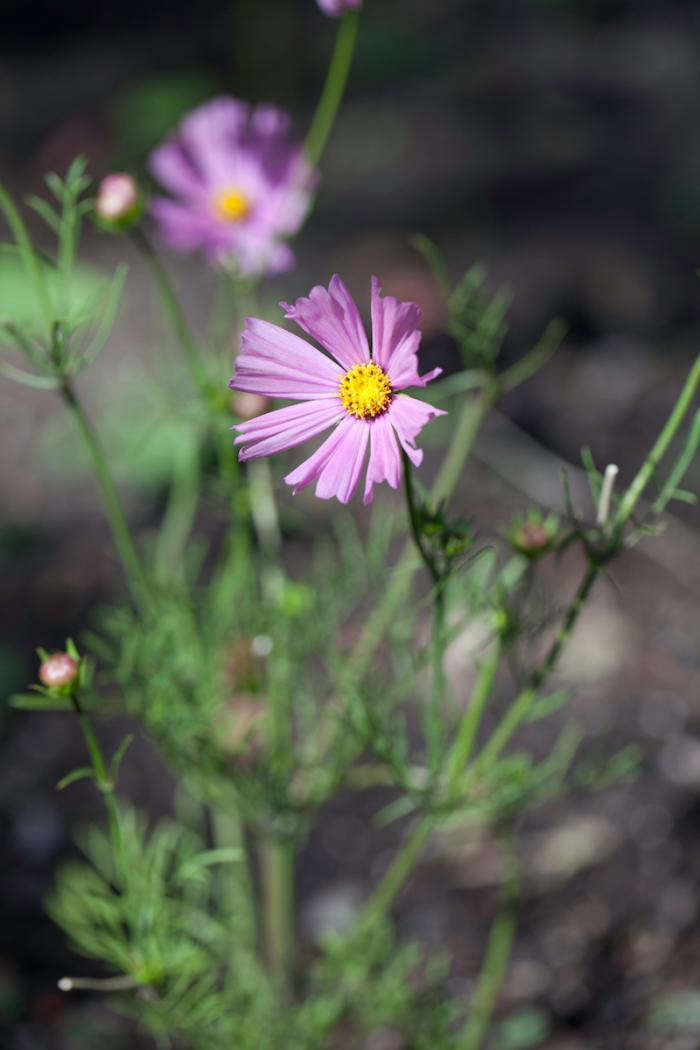One garden, two hives: Can you bees please get along?
The more bees, the better for all of us; of 100 crops that supply 90 percent of the world’s food, bees pollinate more than 70 percent. With the collapse of honeybee colonies becoming a worldwide problem, a University of California at Berkeley study is underway, in a backyard in nearby Mill Valley, to determine if one garden can simultaneously support both honeybees and native California bees. Researchers have planted a bee’s paradise on a gently sloping hillside: blue borage, asters, cosmos, coreopsis and catmint. The goal, says Kathy Ziccardi, who tends the gardens at Hillside Gardens, “is to create year round nectar pollen.”
Photography by Marla Aufmuth for Gardenista.

Above: Honeybees’ tastes run to African Blue Basil and lavender—Provence is their favorite, Ziccardi says. If you’re considering a bee garden, you can also plant sunflowers, Pride of Madeira, rosemary, and Black-Eyed Susans. Prices range from $4.99 to $9.95 per plant, from Amazon, Greenwood Nursery and Annie’s Annuals.

Above: There are approximately four colonies of honeybees living in these hives. They forage for nectar within a five-mile range, but of course, they like a local source.

Above: Native bees tend to be solitary and to love native plants, including California Poppies (Above, Yarrow, Ceanothus, Buckwheat and Monkey Flower. Prices range from $5.95 to $8.95 per plant from Annie’s Annuals.

Above: Honeybees were introduced from Europe. They are extremely important pollinators for our food supply, and have caused a scare in the last few years as many adults abandoned the hives. This was termed “Colony Collapse Disorder,” or CCD.

Above: The causes of CCD are still not fully understood, but it impacted honeybees, not native bees. Since native bees are also very important pollinators, gardeners should plant for them as well.
Above: Asters are great for both types of bees. Aster novae-angliae ‘Skyscraper’ is $7.95 from Annie’s Annuals. Native bees tend to nest in the ground or in wood, so leave some spots in your garden free of mulch.

Above: Hillside Gardens supports honeybees, and more that 26 types of native bees have been counted here. The diversity of pollinators helps keep this garden stunning.


















Have a Question or Comment About This Post?
Join the conversation